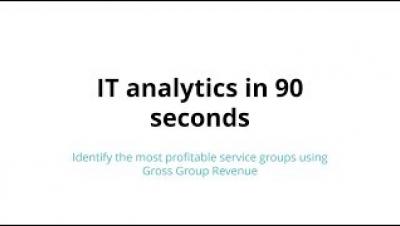Operations | Monitoring | ITSM | DevOps | Cloud
%term
Spring Cleaning Tips for Your Website
There’s some research that points to the Iranian New Year as the source for spring cleaning. The idea was that the end of the colder months was an opportunity to “shake the house” (khooneh tekouni) to feel renewed. Nowruz, or new day, occurs on the first day of spring and like everyone else with a New Year resolution, the concept of cleaning and renewal was about setting a fresh start. Here we are, spring build alpha already deployed in some parts of the world.
IT analytics in 90 seconds: Identify the most profitable service groups using Gross Group Revenue
Getting the Most out of Opsgenie+Atlassian+Dynatrace
Collect, Monitor, and Process AWS Logs and Metrics at Scale with Cognitive Insights
Famed management thinker Peter Drucker is often quoted as saying, “You can’t manage what you can’t measure.” Tracking and analyzing data of a system provides metrics to measure, predict, and improve the underlining health of the system. Logging data is the simplest act of collecting data for measurement and plays an important role in modern enterprises, as it provides a way to measure the health of hardware devices and software applications alike.
The story behind CloudSpend and why we built it
Back in 2008 when we began our journey, cloud computing was still relatively new. Though the term had a lot of buzz around it, organizations only considered the cloud as a place to experiment, not as a viable alternative to run production workloads. Now, the cloud has become the go-to strategy for enterprises and startups alike to deliver their digital business.
Introducing InfluxDB 2.0
Maximize Insights with Sentry's Integrations
We recently released a new set of features that increase visibility into errors across your organization. These features are great and helpful, and you should definitely be using them right now. That said, we also want to remind you of great and helpful integrations that also maximize visibility into your errors.
Preserve Referenced Images When Deleting AMI Images
As your AWS usage grows, so will your stockpile of EBS snapshots and AMI images. Many of these are used for backups, while others are used to launch EC2 instances from Auto Scaling groups and EC2 launch templates. As your collection of AMI images grows, you will need to start rotating out the old AMI images.











